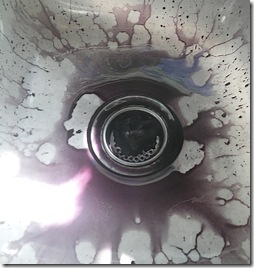 Ask anyone who’s ever fiddled with materials and you’ll see the involuntary shudder when Black is mentioned. While it enjoys status of being a must-have color among fly fishermen, getting a good permanent black will drive both professional and hobbyist to tears.
Ask anyone who’s ever fiddled with materials and you’ll see the involuntary shudder when Black is mentioned. While it enjoys status of being a must-have color among fly fishermen, getting a good permanent black will drive both professional and hobbyist to tears.
… and you don’t have to do it yourself to grit your teeth, as most packages of black materials stain fingers, clothing, and skin.
Dye companies have an asterisk next to their black(s), requiring you to double the amount of dye used to achieve a complete deep color. That translates into stained sinks, discolored fingers, and rinsing the material at least three times as much before the water even resembles clear.
Slurps and dribbles are permanent, and the evidence can’t be hidden, as you and the sink are the same color of sepia.
 Black is the absence of all color, it can only be approximated by adding dark colors together – and as a result every vendor’s recipe is different.
Black is the absence of all color, it can only be approximated by adding dark colors together – and as a result every vendor’s recipe is different.
Most could be described as warm or cold blacks, as they depend heavily on purple which is a mixture of red and blue. Tossing other colors into purple will raise or lower the red or blue – yielding a warm or cold color.
To further complicate matters is the presence of many colors of black. Black, jet black, carbon black, true black, and even new black, are labels used by dye vendors to distinguish between black-as-night and dark charcoal gray.
They’re all a pain to reproduce and your only certainty is the result will be messy, stain the top half of your torso, and won’t be black enough.
What we think of as black is actually Jet Black, the darkest and deepest of all the vendor variants. Not all vendors call it as such, when presented with a choice, that’s the darkest of all.
 Many things can interfere with the coloring process, including natural colors (we assume the black will cover them up), dirt, grease, and oil, and the blend of dye itself. Dyes are made from rare earths and minerals, all of which activate at different times and temperatures – and if the bath doesn’t get hot enough, or is too hot – it’s possible to have a color misfire.
Many things can interfere with the coloring process, including natural colors (we assume the black will cover them up), dirt, grease, and oil, and the blend of dye itself. Dyes are made from rare earths and minerals, all of which activate at different times and temperatures – and if the bath doesn’t get hot enough, or is too hot – it’s possible to have a color misfire.
The rinse water at left shows you how visuals cannot be trusted. Rinsing a pound of loose fur in dish detergent yielded a great deal more dirt than we suspected. It also shows why scissors grow dull, not only will the dirt prevent color from setting on the material, but this kind of grit is hell on the sharpest of scissors.
Familiarity with your dye vendor is the only way to know whether your result has been influenced by other agents. Dyeing six or seven batches of material will commit the shade to memory, allowing you to fiddle with heat and quantity if you get something unexpected.
Over dyeing the material a second time, with partial drying in between can usually fix a poor initial attempt, but sometimes it’s the material itself that resists coloration.
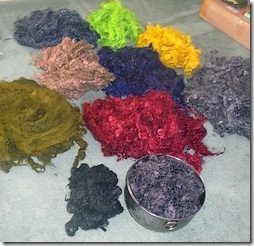 Guard hairs and stiff shiny materials are quite hard compared to loose fur or marabou. A rich deep black in Marabou may not be the same shade when dyeing a slab of Polar Bear, or similar tough material. Over dyeing a second time may fix a dark gray, and it may be enough to over dye it with a deep purple, or dark brown, rather than black.
Guard hairs and stiff shiny materials are quite hard compared to loose fur or marabou. A rich deep black in Marabou may not be the same shade when dyeing a slab of Polar Bear, or similar tough material. Over dyeing a second time may fix a dark gray, and it may be enough to over dye it with a deep purple, or dark brown, rather than black.
At left is about seven pounds of loose fur (multiple animals), how many “blacks” do you see?
Only the foreground two were listed as Jet Black (left) and True Black (right). The rearmost is Gunmetal Gray, Purple in the center, and the rightmost dark color is Silver Gray. The True Black (right foreground) has been dyed twice with twice the amount of dye as normal, yet is still a close match to both Gunmetal and Silver Gray. This shows why familiarity with the vendor is so important – the labeled color is of little help.
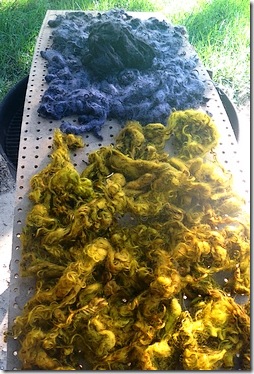
Outdoor light adds a bit of blue to the bucket of True Black. The Jet Black on the mound of drying material shows little change from indoor lighting, it’s still the darkest black in any condition.
For my use the current color of the True Black will work just fine, it’s a component of a larger batch of dubbing that will be a dark gray.
While it showed red in the drain (see above picture) once on the material and exposed outdoors it shows blue, suggesting that if I wish to darken it further I would over dye it with a dark brown – as the red of the brown would cancel the bluish tint shown in the photo.
The rest of the table is yellow that was fast dipped in orange, and then soaked in a weak olive, just one of many secrets to my Golden Stone mix.
I mention it only because my porcelain dye pot sprung a leak while cooking three pounds of hair. Yellow being the most forgiving color and dyeing even in lukewarm water, once I heard the burner sputter – I had time to jam my hand into the pot and cover the hole without parboiling them precious fly tier fingers …
… jaundiced to the elbow is easy for us brown water types to explain.
Test Jet Black, True Black, dyeing hair, bulk fly tying materials, dubbing, Golden Stone, fly fishing, fly tier, acid dyes, protein dyes
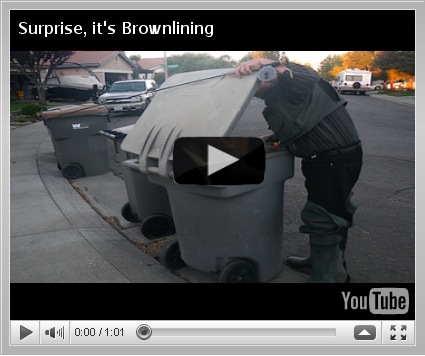

 While the mighty minions of Peta are busy protecting innocent school children
While the mighty minions of Peta are busy protecting innocent school children 

 It was only a matter of time,
It was only a matter of time,  If you’ve ever supervised others you understand how closely work resembles high school. Inkwells replaced by cubicles and communal refrigerators, pigtails a thing of the past, but the guy that dries his shoes in the microwave, or thumbs the donuts is a worthy substitute.
If you’ve ever supervised others you understand how closely work resembles high school. Inkwells replaced by cubicles and communal refrigerators, pigtails a thing of the past, but the guy that dries his shoes in the microwave, or thumbs the donuts is a worthy substitute.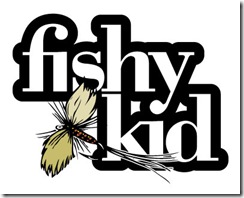
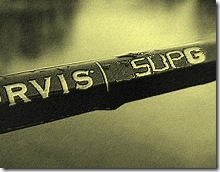 Now it all fits. We can’t lure young folks into the sport as we’re using the wrong bait, and the entire “X-treme” movement is fostered by old guys wishing they could flash gang sign – but can’t knowing white boys from Vermont only get laughed at …
Now it all fits. We can’t lure young folks into the sport as we’re using the wrong bait, and the entire “X-treme” movement is fostered by old guys wishing they could flash gang sign – but can’t knowing white boys from Vermont only get laughed at …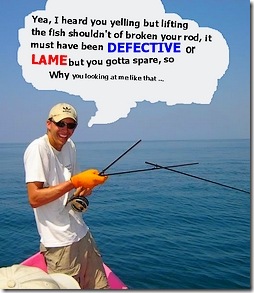 According to my jaundiced perspective, three hundred and fifty bucks is a fair price for a fly rod expected to last me a lifetime.
According to my jaundiced perspective, three hundred and fifty bucks is a fair price for a fly rod expected to last me a lifetime. The War against Invasives takes a bloody turn this week compliments of weapons that assist the socially responsible angler maintain his squeaky clean.
The War against Invasives takes a bloody turn this week compliments of weapons that assist the socially responsible angler maintain his squeaky clean.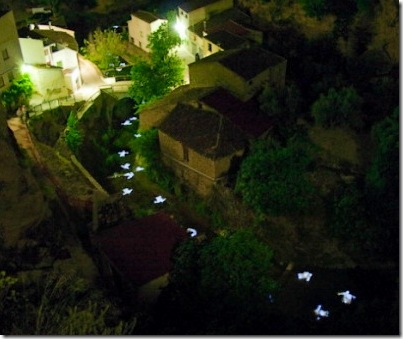
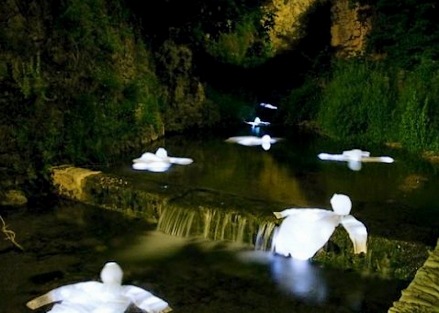
 Ask anyone who’s ever fiddled with materials and you’ll see the involuntary shudder when Black is mentioned. While it enjoys status of being a must-have color among fly fishermen, getting a good permanent black will drive both professional and hobbyist to tears.
Ask anyone who’s ever fiddled with materials and you’ll see the involuntary shudder when Black is mentioned. While it enjoys status of being a must-have color among fly fishermen, getting a good permanent black will drive both professional and hobbyist to tears.
 Many things can interfere with the coloring process, including natural colors (we assume the black will cover them up), dirt, grease, and oil, and the blend of dye itself. Dyes are made from rare earths and minerals, all of which activate at different times and temperatures – and if the bath doesn’t get hot enough, or is too hot – it’s possible to have a color misfire.
Many things can interfere with the coloring process, including natural colors (we assume the black will cover them up), dirt, grease, and oil, and the blend of dye itself. Dyes are made from rare earths and minerals, all of which activate at different times and temperatures – and if the bath doesn’t get hot enough, or is too hot – it’s possible to have a color misfire. Guard hairs and stiff shiny materials are quite hard compared to loose fur or marabou. A rich deep black in Marabou may not be the same shade when dyeing a slab of Polar Bear, or similar tough material. Over dyeing a second time may fix a dark gray, and it may be enough to over dye it with a deep purple, or dark brown, rather than black.
Guard hairs and stiff shiny materials are quite hard compared to loose fur or marabou. A rich deep black in Marabou may not be the same shade when dyeing a slab of Polar Bear, or similar tough material. Over dyeing a second time may fix a dark gray, and it may be enough to over dye it with a deep purple, or dark brown, rather than black.